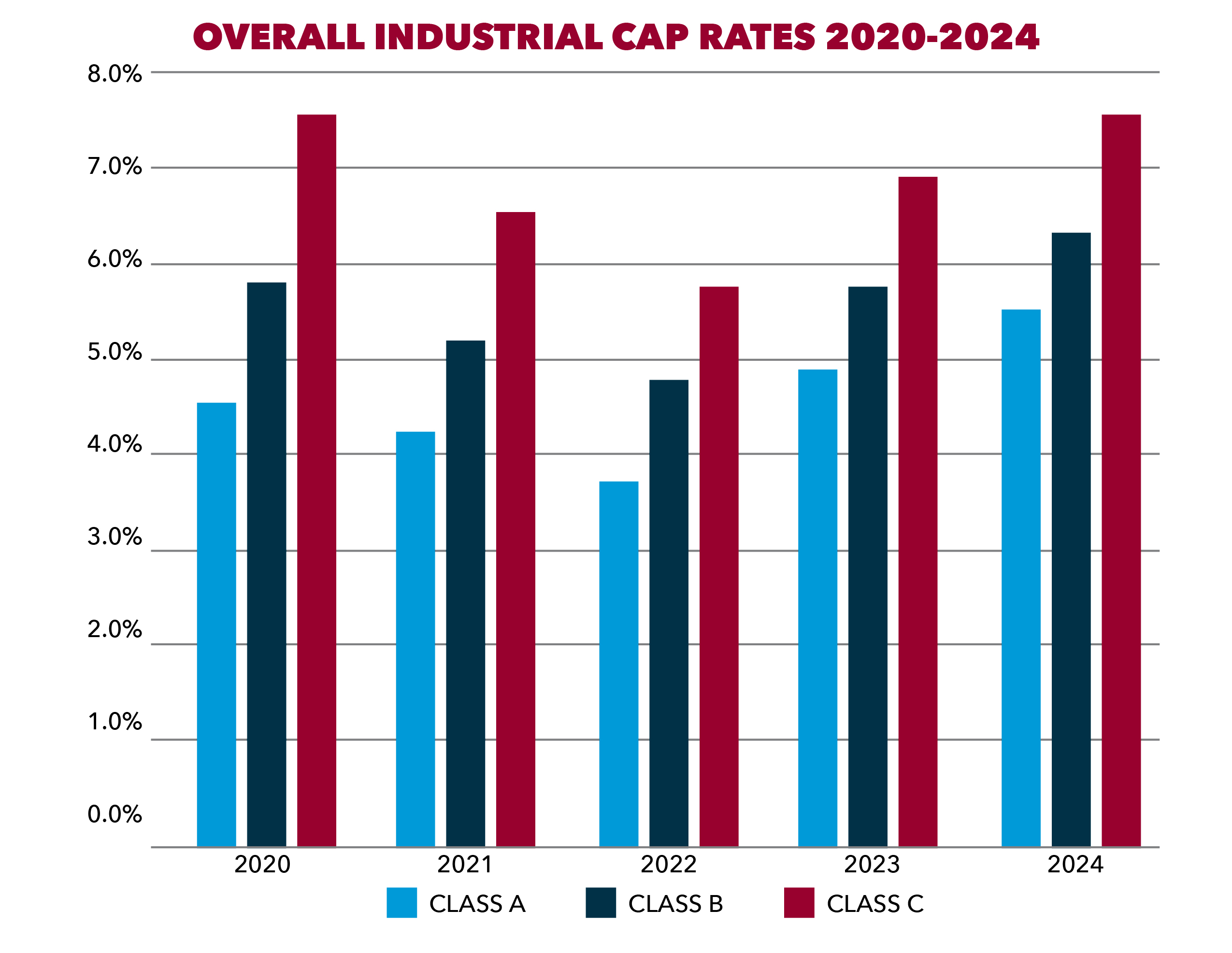Understanding Industrial Capitalization Rates: A Comprehensive Analysis for Investors

In the dynamic world of real estate investing, understanding capitalization rates is crucial for making informed decisions. The recently released investor survey provides a comprehensive look at the capitalization rates for industrial properties from 2020 to 2024, across three asset classes: Class A, Class B, and Class C. This data is vital for investors looking to navigate the complexities of the industrial real estate market.
The Importance of Capitalization Rates
Capitalization rate, commonly referred to as "cap rate," is a fundamental metric used in the valuation of real estate properties. It is calculated by dividing the property’s net operating income by its current market value. Essentially, the cap rate helps investors evaluate the return on investment and risk for a particular property. Lower cap rates generally indicate lower risk and higher property values, whereas higher cap rates suggest higher risk and potentially higher yields, albeit at lower property values.
Trends and Insights from the Survey
The graph in the survey shows the cap rates for Class A, B, and C industrial properties over a five-year span. Here’s what the data tells us:
- Class A Stability: Class A properties, which are typically newer with high-quality tenants and less management hassle, consistently show the lowest cap rates. This suggests stability and low risk, making them attractive to conservative investors. In 2024, these properties stood at a 4.50% cap rate, reflecting a premium valuation in comparison to other classes.
- Class B Variability: Class B properties offer a middle ground, showing moderate risk and return. These properties have fluctuated more significantly over the surveyed period, reaching a cap rate of 5.50% in 2024. This class might appeal to value-added investors looking to capitalize on potential improvements and rent increases.
- Class C Opportunities and Challenges: With the highest cap rates, Class C properties in 2024 recorded rates as high as 7.49%. These properties are often older and may require more management and upgrading. However, the higher cap rate suggests a higher potential yield, attractive to those willing to accept more risk for potentially greater returns.
Yearly Comparisons and Market Dynamics
From 2020 to 2024, all classes showed notable fluctuations. The survey highlights these differences and provides insights into market dynamics. For instance, a dip in cap rates for Class B and C in 2022 might indicate market adjustments or shifts in investor sentiment during that period.
Moreover, the accompanying table in the survey details the changes in basis points over 12 to 48 months, providing a deeper insight into short and long-term trends. These fluctuations can be influenced by various factors including economic conditions, interest rates, and regional market developments.
Implications for Investors
For investors, this data is more than just numbers; it’s a guide to strategic decision-making. By understanding the trends and variances in cap rates, investors can better position themselves in the market, choosing the right class of assets that aligns with their risk tolerance and investment goals.
- Conservative investors might prefer Class A properties for their stability and lower risk.
- Moderate investors may find Class B properties appealing due to their potential for improvement and moderate risk.
- Aggressive investors could be drawn to Class C properties, where the higher risks are balanced by potentially higher returns.
Conclusion
The investor survey offers invaluable insights into the industrial real estate market, providing a clear picture of how different properties are valued over time. Understanding these trends allows investors to make more informed choices, tailor their strategies, and ultimately, maximize their returns in a complex market. As we continue to navigate the economic landscape, keeping a close eye on such metrics will be key to successful real estate investment.
